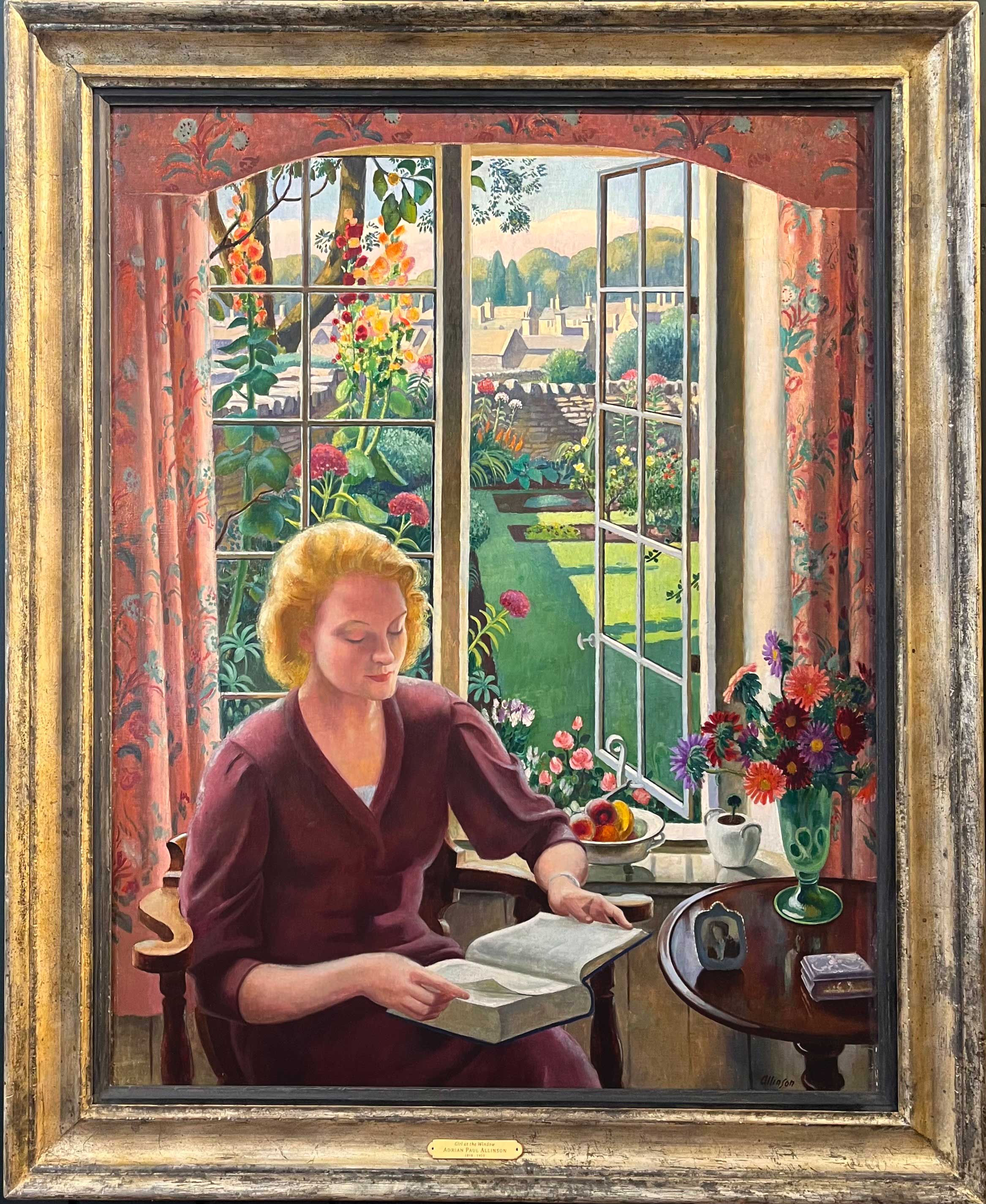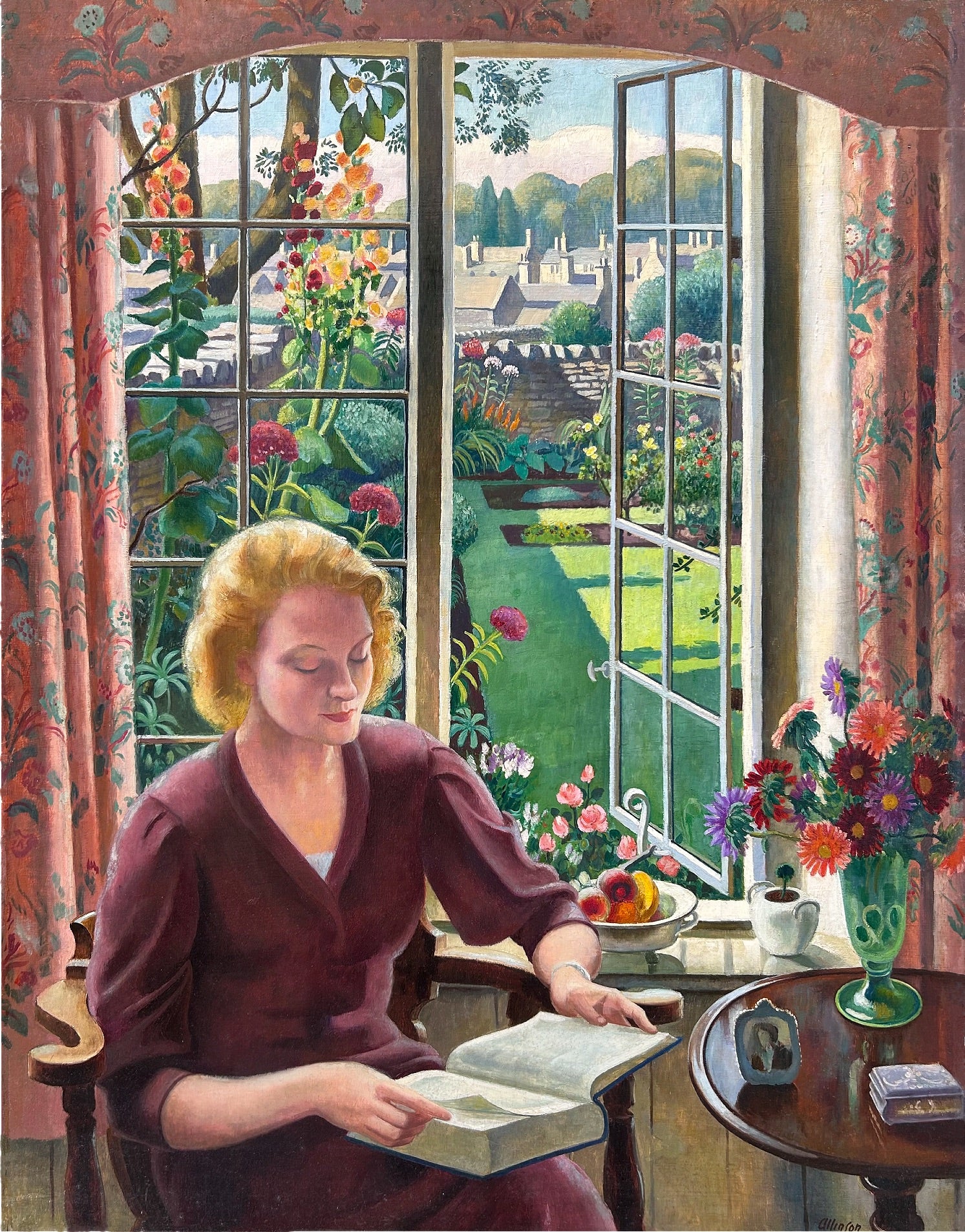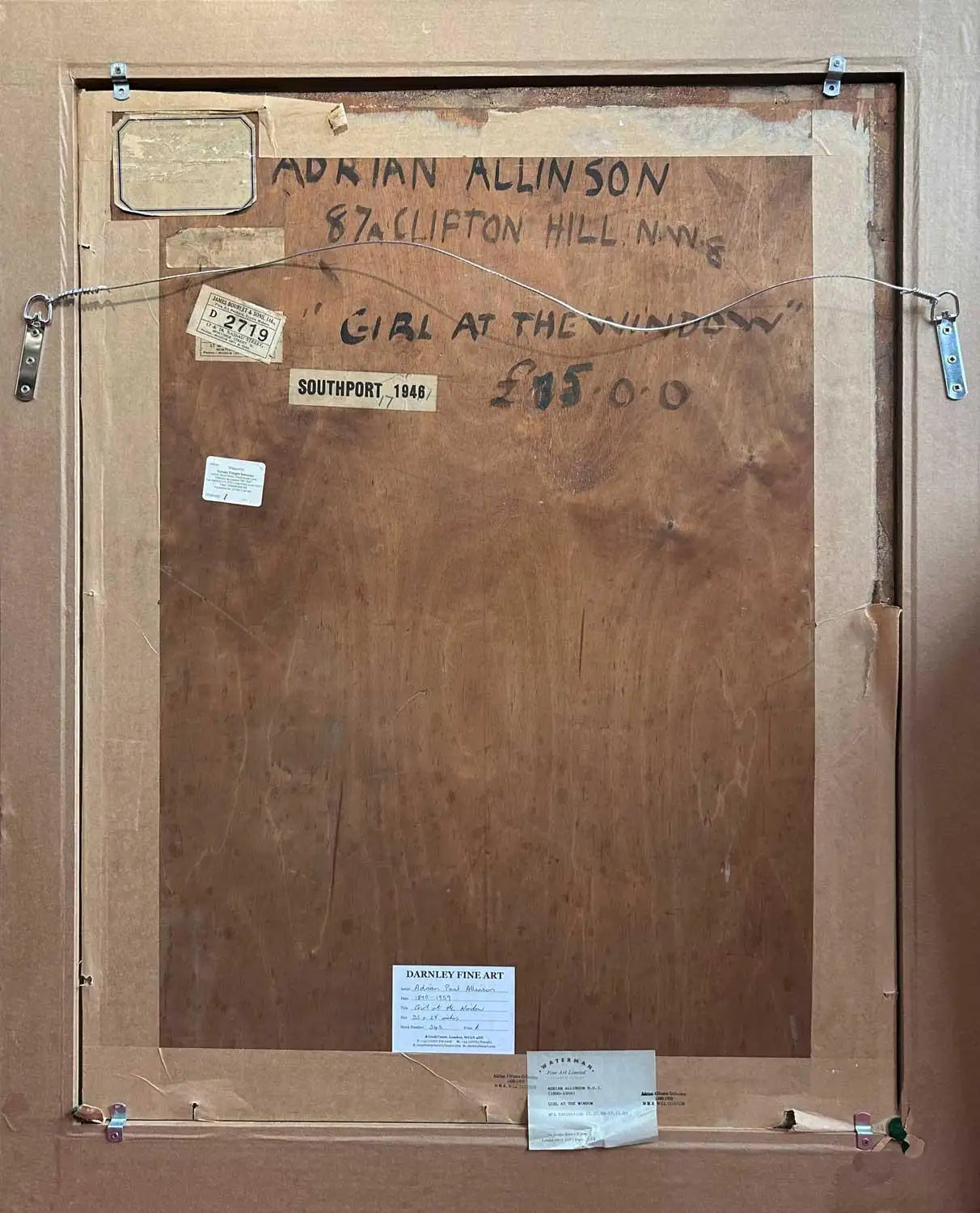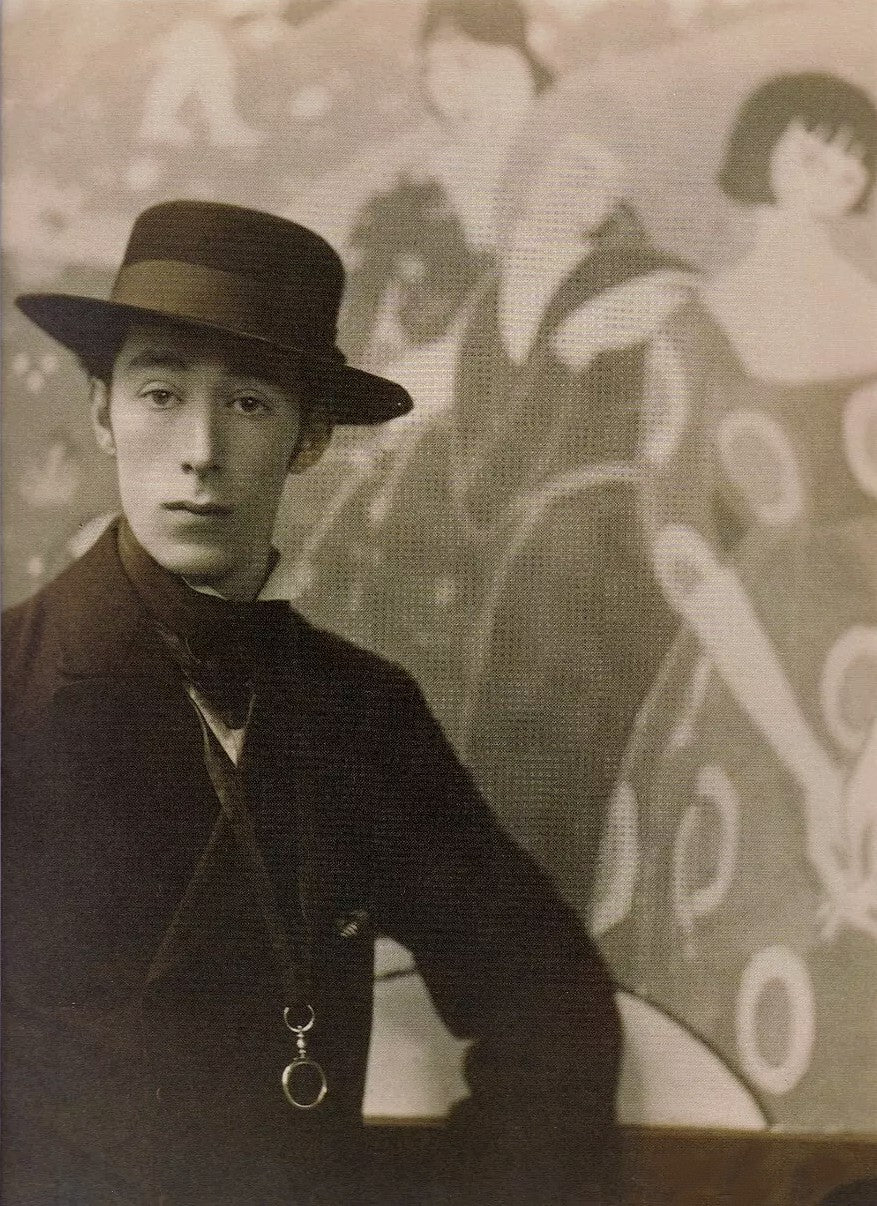

Adrian Paul Allinson
Girl at the Window
Oil on board, signed lower right
Image size: 35 x 28 inches (88.8 x 71 cm)
Contemporary style gilt frame
Provenance:
The Art Exhibitions Bureau
Southport, 1946
Waterman Fine Art, 1989
This painting depicts a blonde lady in a simple pink dress as she relaxes by reading a book near an open window overlooking her garden and the countryside. It is an idyllic scene, representing the English countryside and a scene of tranquilty. The garden is beautiful and well maintained, with a variety of flowers rising up to the window level - it is possible to discern hollyhocks and hydrangeas. The scene is a quotidian one and appears intimate and honest. The amount of ornamentation - the photo frame, the vase of flowers, the jewellery box, the coffee pot and fruit bowl on the window sill - create the sense of a house that is homely, cosy, and ideal.
The variety of decorations also serve to demonstrate the skill of the artist at rendering objects like flowers, fruit, and the patterns of the frame and jewellery box. There is a clear attention to detail, further demonstrated by the painting of the words on the pages of the book that the lady is reading. The perspective of the receding open window and the accurate rendering of the shadows in the garden serves to demonstrate the skill of the artist, and how he valued adding aspects of realism to the highly idealistic scene. The painting is also interestingly framed within the work itself, by a pink curtain with a floral pattern. Aside from the notable focus on flowers is how the colour palette of the work is dominated by greens and pinks, with the bright hues of these colours only serving to add to the sense of idyllicism conveyed within the work.
On the back, the work bears the address of the artist as ‘87 Clifton Hill St, St John’s Wood’, which Allinson is known to have inhabited between 1933 and 1957. Another label on verso indicates it was exhibited in 1946, suggesting that the painting was created between 1933 and 1946.
Adrian Paul Allinson
Born Alfred Pulvermacher Allinson in London 1890, Allinson was the eldest of five siblings and the child of surgeon Thomas Richard Allinson and German-Jewish portraitist Hannah Pulvermacher. Hannah encouraged her son to paint, create music, and learn languages during his childhood.
Allinson initially studied at Wycliffe College, Gloucestershire, but was expelled and sent to Wrekin College, Shropshire, after attempting to convince his classmates God did not exist. After leaving school, Allinson briefly studied medicine but his love for art was too strong, and he began to study at the Slade School in 1910, winning a scholarship in his second year.
From 1911, Allinson began to exhibit with the New English Art Club, the Friday Club, and the Camden Town Group. The founder of the Camden Town Group - Walter Sickert - mentored Allinson in his depictions of theatre, ballet and music hall scenes, and enabled Allinson to sell his works to the dance historian and bookseller Cyril Beaumont.
Graduating from the Slade in 1912, Allinson briefly travelled abroad to study at Henrich Knirr’s art school in Munich and the Grande Chaumiere in Paris. On his return to London in 1914, he helped to found the London Group and held two joint exhibitions at the Chenil Galleries in 1914 and 1915. Allinson was medically unfit to serve in the First World War, but was also a committed pacifist and aligned himself with the other conscientious objectors of the Bloomsbury Group. It was during this time he painted his famous painting collection known as The Cafe Royal. Allinson produced caricatures for local newspapers such as the Daily Express, and worked for the Beecham Opera Company as a set designer.
In the inter-war years, Allinson travelled around Europe and settled down with his wife and son in a small Swiss village, but would send his art to exhibit at the Royal Academy. The family returned to London in the 1920s, with Allinson opening his studio in St John’s Wood. He travelled to the Mediterranean with German artist Henrich Schroder, painting landscapes of Italy, Greece, Spain, Tunisia and the Balearic Islands. In the 1930s, he was elected to the Royal Society of British Artists, the Pastel Society, and the Royal Institute of Oil Painters. A true Renaissance man, Allinson also exhibited sculpture and pottery, joining the Art Workers’ Guild for two years in 1933. He was predominantly employed by London Transport, British Railways, and the Empire Marketing Board producing stylised travel posters for a variety of national and global destinations.
When the Second World War broke out, Allinson was selected by the War Artists’ Advisory Committee to be an official war artist, producing paintings of the effects of the conflict on the London cityscape. His wife and son spent the war years in Gloucestershire, where his wife unfortunately passed away just before the war’s conclusion.
After the war, Allinson was employed at Westminster Technical Institute as a teacher of painting and drawing, whilst continuing to exhibit his own work. He also worked on the wax sculpture of Kwame Nkrumah, the first Prime Minister of Ghana, for Madame Tussauds.
Allinson passed away in February 1959. A memorial exhibition was held at the Royal Society of Painters in Water-Colours in 1962, as well as a retrospective at the Fine Art Society in 1984.
Museums
London Transport Museum, Victoria & Albert Museum
Manchester Art Gallery, The Potteries Museum & Art Gallery, Aberystwyth University School of Art Museum and Galleries, Wolverhampton Art Gallery, Brighton Museum, Ferens Gallery and many more.







